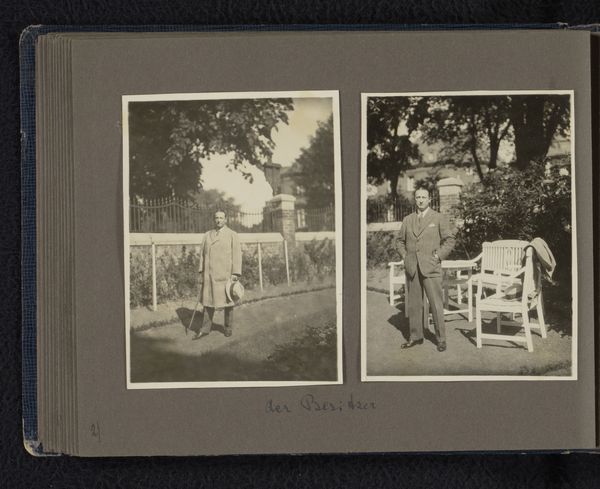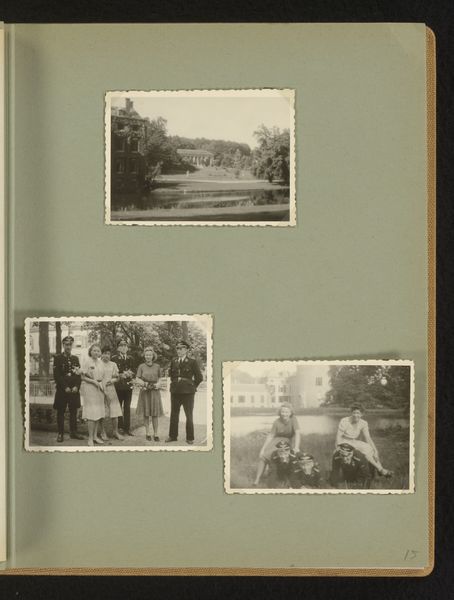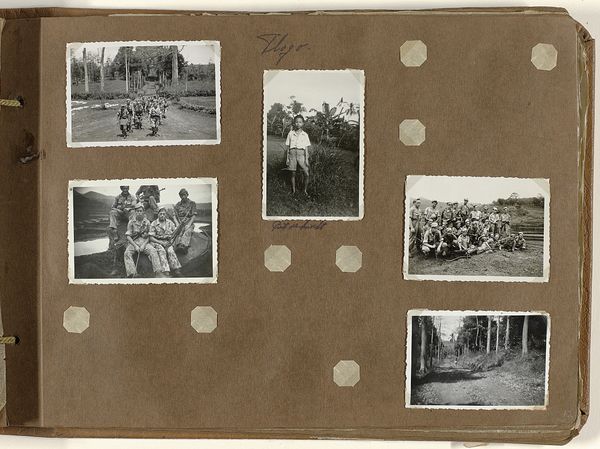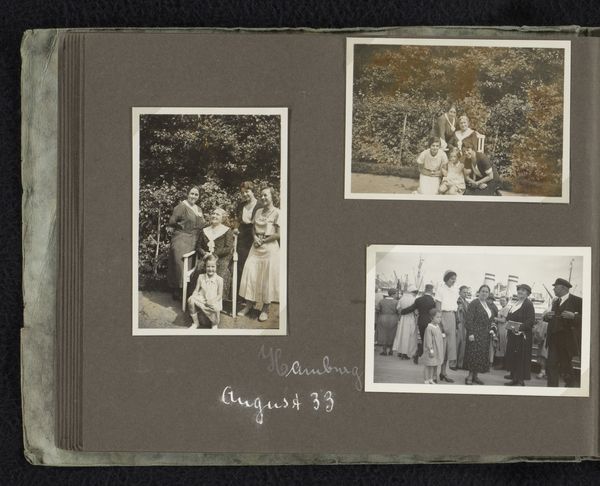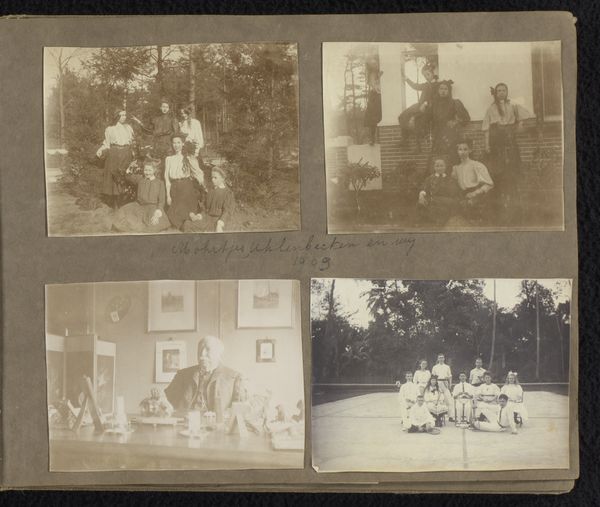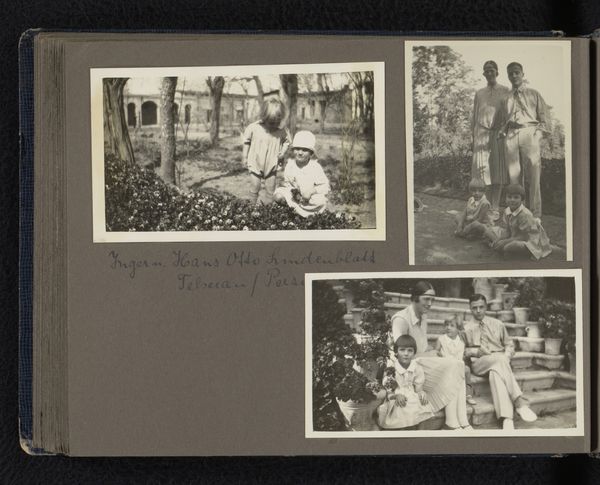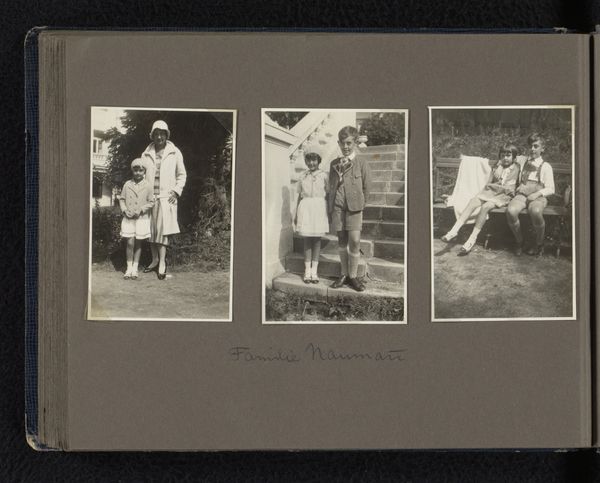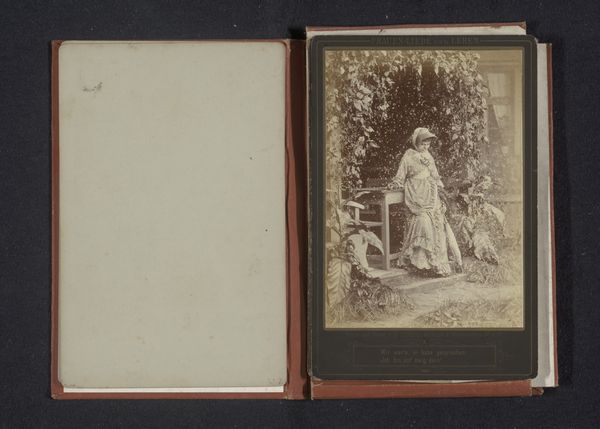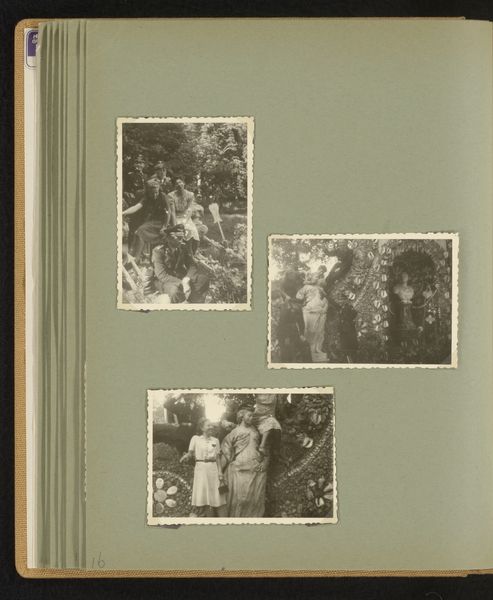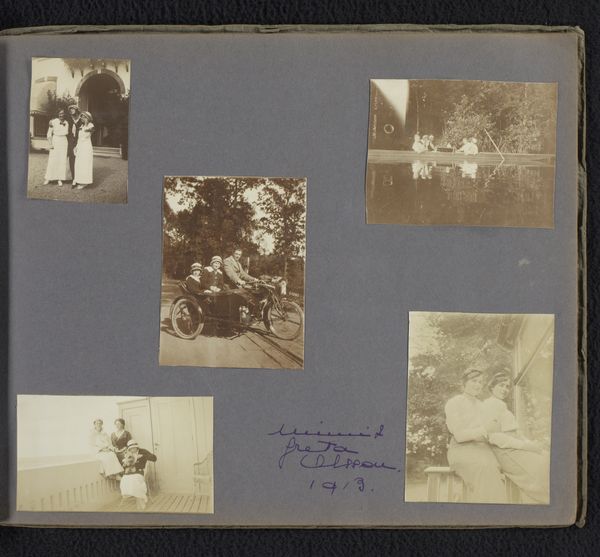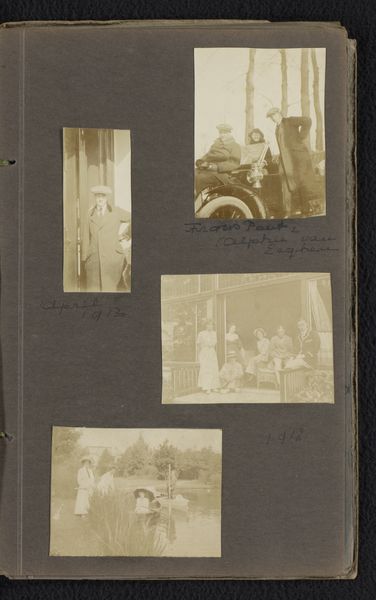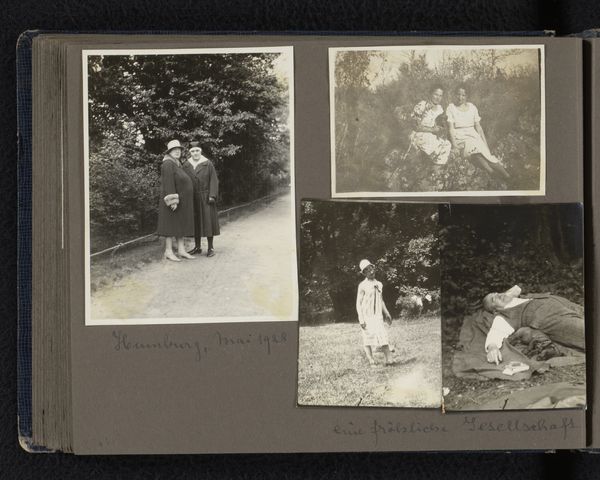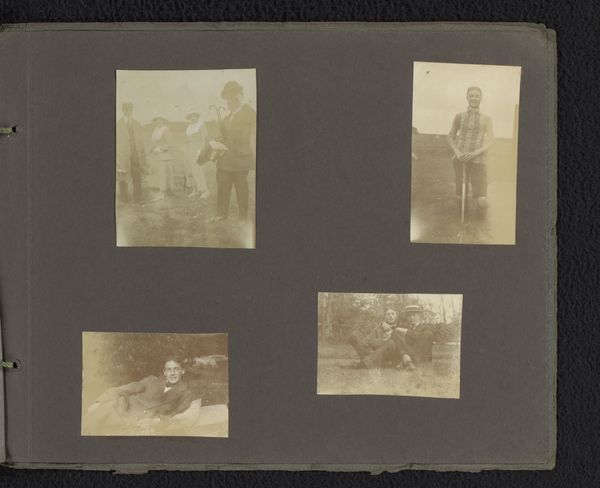
Twee foto's van Emilie van den Berg en haar twee kleinzoons Frank en Pieter Furnée 1920 - 1930
0:00
0:00
photography, gelatin-silver-print
#
portrait
#
still-life-photography
#
photography
#
coloured pencil
#
group-portraits
#
gelatin-silver-print
#
realism
Dimensions: height 182 mm, width 268 mm
Copyright: Rijks Museum: Open Domain
Editor: So, this work, "Twee foto's van Emilie van den Berg en haar twee kleinzoons Frank en Pieter Furnée," roughly translates to "Two Photos of Emilie van den Berg and Her Two Grandsons Frank and Pieter Furnée". They're gelatin silver prints, dated sometime between 1920 and 1930. There’s such a strong sense of family connection that emanates from these very simple portraits. How do you interpret the visual language in these types of personal photographs? Curator: These images, while seemingly straightforward family snapshots, speak volumes about representation, power, and gender in the early 20th century. Consider the setting – seemingly a private garden. Who had access to such spaces and the leisure time to cultivate them? The grandmother figure is central, surrounded by children – notice the positioning and implied social expectations in gender dynamics. Who is included and excluded from this picture, and why does that matter? Editor: That's a compelling point about access. I was initially drawn to the expressions of the children; there’s such a palpable energy. Curator: Exactly. But also ask: whose energy is considered and valued? Were these children forced to sit still? Photography at this time often reflects social values. Look at the symbolism in the clothing, the implied narrative of family, and even the way they're posed, arranged—are these choices arbitrary, or carefully constructed performances? It reflects the intersection of class, gender, and family. Editor: I never considered the arrangement as performative before, but now that you mention it, the photos do appear staged to a certain extent. It really alters my understanding of them. Curator: These photographs act as mirrors and windows onto past perspectives. Thinking about how historical photographs shape and inform present-day family roles can create rich dialogue. They ask critical questions about how we interpret the past, and, consequently, shape our future.
Comments
No comments
Be the first to comment and join the conversation on the ultimate creative platform.
